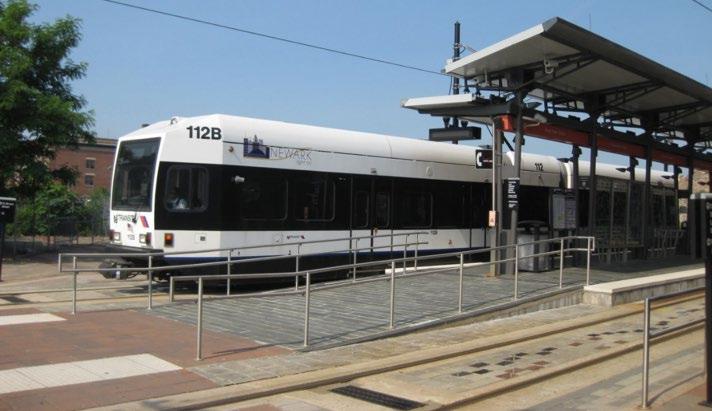
18 minute read
Automated BRT
from Intersections + Identities: A Radical Rethinking of Our Transportation Experiences
by APA TPD SoTP
Automated BRT: A New Mode for High-Quality, High-Capacity Transit
user Richard Mudge Jerome Lutin
Advertisement
Figure 1: LRT - Newark, NJ Source: J. Lutin
INTRODUCTION
This paper describes a new approach to high-capacity transit, Automated Bus Rapid Transit (ABRT). ABRT builds on technologies developed to support autonomous vehicles. While autonomous vehicles get most of the attention in the media, buses can use these individual technologies to help solve specific public transit problems. These range from ways to enhance conventional Bus Rapid Transit (BRT) so that it is more comparable to light rail transit, (LRT) to opportunities to improve the quality of traditional bus transit. This paper highlights the advantages of an Automated BRT system for cities that are planning transit infrastructure investments in anticipation of growth or to serve unmet transport needs. ABRT may also fit in cities that have begun to prepare for the deployment of self-driving technology.
COMPARING CURRENT MODES OF TRANSIT
FTA defines Light Rail as a transit mode that typically is an electric railway with a light volume traffic capacity compared to heavy rail (Figure 1). It is characterized by: • Passenger rail cars operating singly (or in short, usually two-car, trains) on fixed rails in shared or exclusive rightof-way (ROW); • Low or high platform loading; and • Vehicle power drawn from an overhead electric line via a trolley pole or a pantograph (Glossary, n.d.). The FTA defines Bus Rapid Transit as fixed-route bus systems that operate at least 50 percent of the service on fixed guideway. These systems also have defined passenger stations, traffic signal priority or preemption, and short headway bidirectional services for a substantial part of weekdays and weekend days (Glossary, n.d.). A growing number of BRT lines operate on arterials and may not have dedicated guideway.
Most LRT and conventional BRT vehicles now have low floors throughout most of the vehicle which eases boarding and alighting (Figure 2). Some BRT systems also have level boarding and are compliant with the Americans with Disabilities Act. Most LRT vehicle operators are located away from boarding areas. This makes on-board fare collection impractical. Although bus drivers for conventional BRT vehicles can collect fares, most systems are trending toward off-board fare collection or electronic fare collection which allows passengers to use all doors on the bus. This is particularly useful to help avoid COVID-19. In many ways, LRT and conventional BRT are similar, but each has distinct advantages and disadvantages. LRT has greater passenger capacity potential with a single operator, but the need to construct track, signals, electric power systems, and specialized maintenance facilities means that infrastructure costs will be substantially more than BRT. Conventional BRT has less passenger capacity potential per operator than LRT, but significantly lower infrastructure costs and greater flexibility in terms of ease of route and service level modifications, since BRT buses can use lanes on existing streets as part of the permanent route or temporarily, as part of construction phasing. Automated BRT has the potential to improve BRT performance to equal rail capacity and service levels in most respects, but with lower capital costs, and greater flexibility to adapt with changing technology. On LRT systems, expensive trackwork and signals may be needed at terminals and junctions. BRT can use conventional traffic signals, roundabouts, and intersections at such locations (Figure 3).
AUTOMATED BRT – THE TECHNOLOGY
Levels of Automation
There has been a lot of hype associated with automated vehicles, resulting in growing skepticism about the speed with which fully autonomous vehicles will be deployed. In the transit bus industry, however, real progress is being made based on sound scientific and engineering work. Adding the Right Technology
Buses have been retrofitted with automated driving technology in demonstrations over the past two decades, and bus original equipment manufacturers (OEMs) plan to incorporate various automated driver
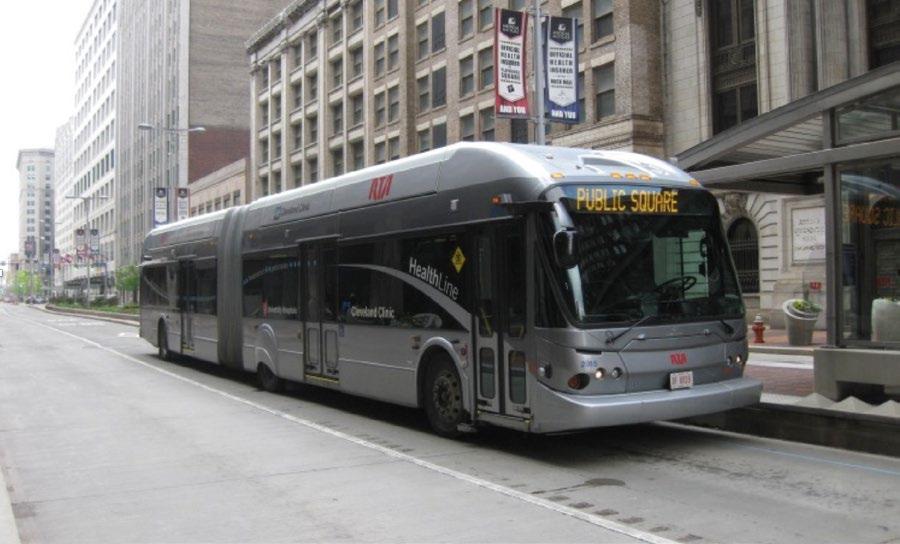
Figure 2: BRT Articulated Bus - Cleveland, OH Source: J. Lutin Figure 3: Landscaped BRT Station - Los Angeles, CA Source: Google Earth
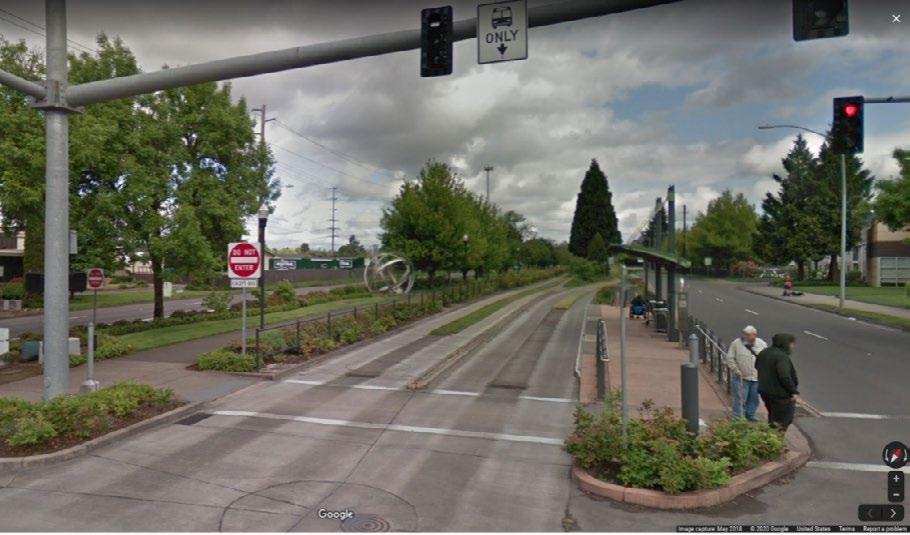
assistance systems into future production models. Existing buses can be retrofitted with proven technology. For example: • Drive-by-wire systems – Throttle, braking, and steering systems are modified to allow electromechanical activation. • Imaging sensors – Cameras, radar, and lidar (light detection and ranging) sensors are placed on the vehicle to generate a virtual model of the operating environment in real time. Each type of sensor has its own advantages in terms of the type of objects that it can identify and the distance over which it operates. In recent years the cost of these technologies has dropped dramatically, and performance has increased. • Locating devices – GPS and inertial measurement units (IMU’s) that incorporate gyroscopes and accelerometers to measure position, speed, and changes in motion. Other methods track distances from objects (buildings, signs, trees etc.) along the right of way. • Stored high-definition maps and landmark databases - to guide the vehicle from origin to destination and ensure it stays within a geographically defined operating area – sometimes called a “geofenced” area. • Autonomy systems – computing devices that accept inputs from sensors, maps, and localizing devices; fuse the data; and use artificial intelligence to provide directions to the vehicle by activating functions through the drive-by-wire system. • Data recorders and analyzers – to collect and mine the data to evaluate vehicle and system performance.
• V2X communications (between vehicles and roadside sensors) allow vehicles to communicate wirelessly with roadside units to exchange data, and with each other to enable them to operate collaboratively. An example is traffic signal priority in which Automated BRT buses can communicate with traffic signals to gain extra green time in order to avoid delays, or to slow down in advance of a red light. Using Automation to Assist, not Replace, Drivers
In 2018, the Federal Transit Administration published the Strategic Transit Automation Research (STAR) Plan that includes an automated BRT use case (Machek et al., 2018). The authors describe it as follows: “The automated Bus Rapid Transit technology package uses a full-size or articulated bus to provide BRT service without a driver on board the vehicle”. … “Fully-automated BRT could be of interest to cities that are considering cost-effective alternatives to light rail transit or other high-capacity transit systems.” The goal of Automated BRT as defined in this paper is not to remove the driver but rather to provide technology that will enable transit authorities to transport more passengers safer, more comfortably, and with greater accessibility for the mobility impaired. The driver may be able to spend more time assisting passengers rather than focusing on maneuvering in traffic. Therefore, the definition of ABRT used in this whitepaper can include fully autonomous operation but does not require it. Much of the automated functionality needed for ABRT to match LRT can be achieved with lower levels of automation, most of which has already been
demonstrated on autos, trucks, and buses Automated capabilities described here include: • Automated Precision Docking • Automated Collision Avoidance and
Emergency Braking • Automated Lane Keeping • Automated Bus Platooning • Smooth Acceleration and Deceleration
ADVANTAGES OF AUTOMATED BRT TECHNOLOGY
Precision Docking
Disabled riders often need lifts or ramps deployed when boarding and alighting from buses (Figure 4). In addition to the inconvenience this creates for the disabled user, they often report feeling stigmatized by the delay created for other riders. The operational inefficiencies encountered by lack of access to BRT by disabled individuals are reflected by a vast difference in operating expenses. FTA data for 2019 shows that nationwide, the average conventional BRT trip cost is $3.43 per trip while the cost for accessible service (demand-responsive paratransit) is $39.51 per trip (NTD National Transit Database 2018 National Transit Summaries and Trends, 2019). To provide ADA-compliant level boarding for all riders without using lifts or ramps, bus door openings must be no more than three inches (8 cm) away from the platform. Larger gaps can lead to passenger accidents and injuries, and smaller gaps can lead to bus and platform damage. Consistently achieving that gap is challenging for drivers. This can be particularly difficult to achieve for rear doors, especially for articulated buses. Automated systems that can aid the driver in precision docking were successfully demonstrated first at Lane Transit District in Eugene, Oregon from 2013 to 2015 (Gregg & Pessaro, 2016). Additional testing of precision docking is being included in two FTA-funded demonstrations: one by Connecticut Department of Transportation (CTDOT) on the CTfastrak Hartford – New Britain BRT line and the other by the Kansas City Area Transportation Authority to test precision docking technologies on the Prospect MAX BRT system (Connecticut Department of Transportation, 2020; Kansas City Transportation Authority, 2020). Robotic Research provides technology for both projects using New Flyer buses in Connecticut and Gillig buses in Kansas City.
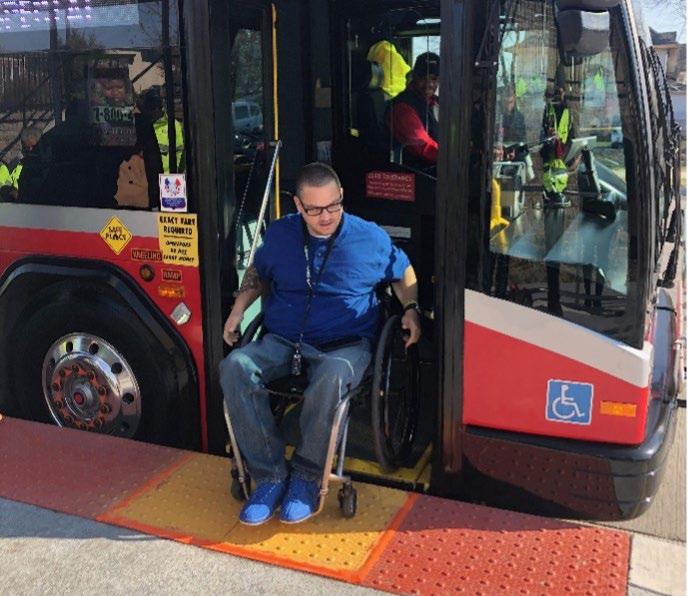
Figure 4: Level Boarding in Wheelchair - Kansas City, MO Source: KCATA
Automated Lane Keeping
Automated lane keeping has been successfully tested by the Minnesota Valley Transit Authority (MVTA) in 2010-2011 (Pessaro, 2013). MVTA operates express buses on freeway shoulders in the Twin Cities area. Automated lane keeping helped drivers keep buses centered on the narrow shoulders, improving safety, and reducing
driver stress (Figure 5). In addition to facilitating the use of freeway shoulders, for Automated BRT, this functionality can reduce lane widths resulting in narrower rights of way, less paving, and lower infrastructure costs. This technology is particularly important for BRT systems that operate on narrow city streets. Automated Bus Platooning
Sometimes called “leader-follower” operation can use connected vehicle communications (CV2X) to form trains or “platoons” of buses. Leader-follower operation has been successfully implemented by Robotic Research on fullsize trucks for the US Army under rigorous combat conditions. Related deployment is underway for commercial trucks by several firms. The Port Authority of New York and New Jersey (PANYNJ) plans to demonstrate bus platoons to increase capacity and reliability on the Exclusive Bus Lane (XBL), a contraflow lane that carries 1,850 buses into the Lincoln Tunnel during the four-hour morning peak period each weekday (Figure 6; Port Authority of New York and New Jersey, 2019). This technology will also ensure that the buses stay within the narrow lane used for the XBL and avoid knocking down lane delimiters that help keep oncoming traffic in adjacent lanes from entering the busonly lane. The CTDOT project will also deploy bus platoons along the CTfastrak For Automated BRT, bus platooning enable a driver in the lead bus to control one or more following buses, providing additional capacity and reducing the distance between buses to improve speed and flow. This increases the potential number of passengers per driver. Leader follower systems also provide management with the flexibility to use buses as part of a bus platoon during rush hours and then as individual buses for passenger pickup and drop off on either ends of the BRT section. Another option would use the leader-follower platoon during peak hour traffic and use buses individually during off-peak periods when less capacity is needed. The train-like capabilities offered by platooning result in a mode of transit that offers the capacity potential of LRT, but with the flexibility to manage peak vs. non-peak needs, reach of service, and population growth changes.
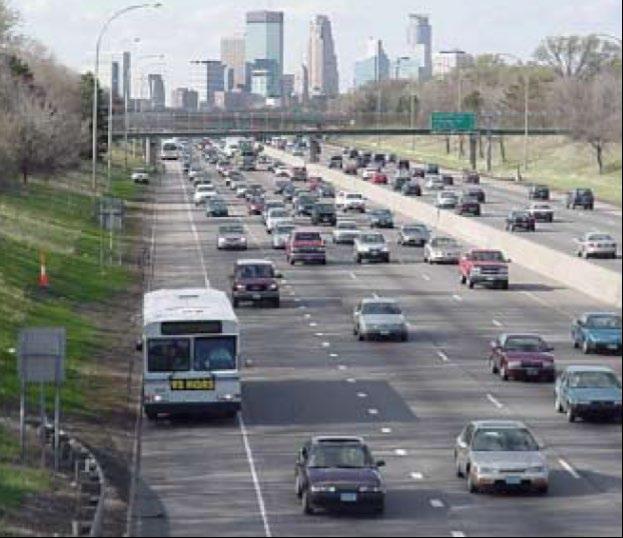
Figure 5: Automated Bus on Shoulder - Minneapolis, MN Source: FTA Lane Assist Technology Report 2003
Figure 6: Exclusive Bus Lane (XBL) – Weehawken, NJ Source: PANYNJ
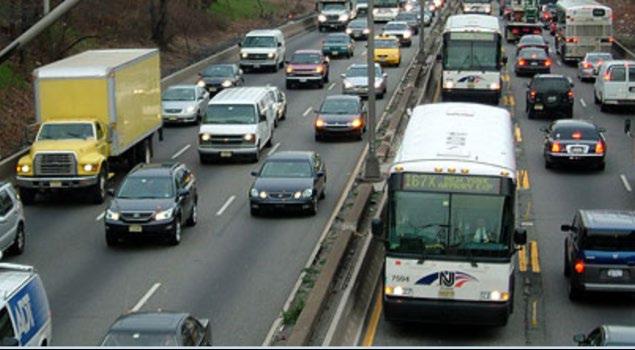

Figure 7: Bus Collision Avoidance Testing Source: Virginia Tech Transportation Institute
In 2019 US bus transit agencies reported 6,228 collisions, 16,594 injuries, 95 fatalities, and $770 million in casualty and liability expenses (National Transit Database, Safety and Security Time Series Data, n.d.; 2019 annual database operating expenses, n.d.). 74 percent of high value bus insurance claims (more than $100,000) have been attributed to collisions (Lutin et al., 2016). Automated collision avoidance and emergency braking (AEB) systems to prevent forward collisions with vehicles and collisions with vulnerable road users (such as pedestrians and cyclists) are now common options for passenger cars and are increasingly used by commercial vehicles. Adapting these systems for buses is currently under way in several FTAsponsored projects and bus OEMs (Figure 7). Research shows that AEB systems could yield a significant return on investment in terms of reducing collision related insurance claims for the transit industry. Much of the technology needed for AEB, including sensors, drive-by-wire kits, and computers can be shared with other automated functions as an integral part of Automated BRT. This technology could also monitor other blind spots such as the rear door area.
SMOOTH ACCELERATION AND DECELERATION
The ability to control acceleration and deceleration in a coordinated fashion will improve rider comfort while also reducing the prospect of passenger slip and fall incidents. The ability to smooth bus movement supports other automated controls including lane keeping and platoons. In addition, CV2X technology can allow the bus to anticipate traffic signal changes which can also reduce fuel use. The same infrastructure that enables vehicle-to-infrastructure communications between automated transit buses and traffic signals could be utilized by connected vehicles, as they become more common. This dual-use infrastructure is another example of how Automated BRT allows transit agencies to scale their transit solution as technology advances.
BUS YARD AUTOMATION
ABRT technology can help make bus yards more cost effective. Buses can be parked and retrieved without a driver (this is a special exception to the rule mentioned above about always having a driver on an automated bus). The automated bus will also reduce bus hits and related damage as buses are parked near each other and then retrieved. The potential savings may help recover the costs of adding yard automation technology to the buses.
AUTOMATED BRT – A SUMMARY
While the value of an integrated ABRT system is likely greater than the sum of its parts, Table 1 summarizes the benefits of its individual components.
Table 1. The Value of Automated Bus Rapid Transit
Automated Collision Avoidance and Emergency Braking
• Save lives • Fewer collisions • Fewer injuries • Reduce insurance claims • Reduce collision damage repairs • Reduce spare bus ratios Automated Lane-Keeping • Narrower busways • Support turning lanes • Fewer sideswipe collisions • Fewer mirror replacements • Less ROW acquisition and infrastructure cost • Use of shoulders for buses
Automated Precision Docking • Level boarding at all doors • ADA-compliant access for mobility impaired users • Improved service to disabled community at lower cost to agency • Fewer boarding and alighting accidents • Reduce damage to buses and platforms from manual docking
Automated Smooth Acceleration, Deceleration and Speed Control
Automated Bus Platooning and Automated Leader-Follower Capability • Better ride quality • Greater comfort for passengers • Fewer slip and fall incidents • Increased fuel savings • Increased passenger capacity on high volume routes • Increased flexibility to adjust passenger capacity by time of day • Increased passenger spacing with social distancing • Improve passenger to driver ratio
Together, the above benefits combine to enhance Bus Rapid Transit into a mode of high-quality, high-capacity transit that compares with LRT while reducing infrastructure costs and increasing flexibility to meet changing demand over time.
WHERE DO WE GO FROM HERE?
While Automated BRT can be described as a new transit mode, the underlying technologies are proven. The transit industry is under pressure to find costeffective ways to improve service for their customers. ABRT (as well as its individual components) offer a promising solution. Indeed, they may open the door to public private partnerships for applications such as yard automation. Industry Developments – In March 2021 New Flyer Industries of America, Inc., the largest manufacturer of transit buses in North America, in collaboration with Robotic Research LLC, rolled out the Xcelsior Charge AV, a prototype battery electric 40-foot bus which incorporates many of the automated use cases discussed in this paper (Figure 8). Gillig LLC, another large transit bus manufacturer in North America, also has agreed to develop automated buses in partnership with Robotic Research. New Flyer is building three Level 4 automated buses for the CTfastrak project mentioned above based on the Xcelsior Charge AV prototype ( New Flyer, 2020). This deployment, which is funded by the FTA and CTDOT, will be the first Automated BRT deployed in revenue service in the US. Additional manufacturers have announced automated bus pilots in China, Germany, and Scotland, although it is unclear if these are intended to operate as BRT. Over the next few years, it is expected that some bus manufacturers will add ADAS equipped buses to their standard commercial lines. An association of transit and transportation agencies has formed the Automated Bus Consortium, a collaboration designed to investigate the feasibility of implementing automated bus projects across the United States. The Consortium aims to accelerate the development of automated transit technologies (Automated Bus Consortium, n.d.). Federal policy – FTA includes an automated BRT use case with level 4 automation as an integrated demonstration in the STAR plan’s five-year strategic transit automation research roadmap, starting in year four, Federal Fiscal Year 2021. The CTDOT project may meet the goals for that integrated demonstration. Although the STAR plan does not include future funding targets, there is clear interest in providing continued technical support for the various use-cases including ABRT.
Incorporating ABRT into the Planning
Process – One purpose of this paper is to lay the groundwork for including Automated BRT in the planning process. Planning for high-capacity transit corridors involves a multi-year process, especially if Federal funds are used. Most Federally funded capital grants are discretionary or competitive, require local matching funds, and are evaluated for funding based

Figure 8: New Flyer Xcelsior Charge AV – Source - New Flyer Industries of America, Inc.
on a number of criteria (Capital Grants Program, n.d.). Among the steps involved, prospective grantees must show that alternatives have been considered and evaluated for aspects such as mobility, cost-effectiveness, and environmental impacts. It is in this part of the planning process that an ABRT alternative can be developed and considered as a viable alternative. It is hoped that this white paper will stimulate thinking about the potential offered by Automated BRT. While no integrated ABRT system is yet in operation, this paper provides the basis for planners to engage with OEMs, autonomy firms, and experts to collaborate on planning and engineering needed to deploy for ABRT corridor deployments.
About the Authors
Richard Mudge, PhD
Richard Mudge is President of Compass Transportation and Technologies, Inc. He currently serves as a consultant to Robotic Research LLC. His experience includes work on the economic benefits of automated vehicles and work for the Society of Actuaries on recent changes in the automated vehicle industry.
Jerome M. Lutin, Ph.D., PE, AICP, F.ITE
Jerome Lutin retired from positions as Senior Director of Statewide and Regional Planning at New Jersey Transit and Distinguished Research Professor at New Jersey Institute of Technology. He currently serves as Principal Investigator for the FTA/Pierce Transit Automated Collision Avoidance and Mitigation Safety Research and Demonstration Project and as a consultant to Robotic Research LLC. He chairs the TCRP Panel on the Effects of Automation on the Transit Workforce (TCRP J-11/Task 34 [Active], n.d.).
References
2019 annual database operating expenses. (n.d.) Federal Transit Administration. https:// www.transit.dot.gov/ntd/data-product/2019-annual-database-operating-expenses Automated Bus Consortium. (n.d.). https://www.automatedbusconsortium.com/ Capital Grants Program. (n.d.). Federal Transit Administration. https://www.transit.dot. gov/funding/grant-programs/capital-investments/about-program Connecticut Department of Transportation. (2020, June 19). CTDOT receives 37 million in federal grants [Press release]. https://portal.ct.gov/DOT/News-from-the-Connecticut-
Department-of-Transportation/2020/CTDOT-Receives-37-Million-in-Federal-Grants Glossary. (n.d.). National Transit Database. https://www.transit.dot.gov/ntd/nationaltransit-database-ntd-glossary Gregg, R. & Pessaro, B. (2016, January). Vehicle Assist and Automation (VAA) demonstration evaluation report (Report 0093). Federal Transit Administration, U.S.
Department of Transportation. https://www.transit.dot.gov/sites/fta.dot.gov/files/ docs/FTA_Report_No._0093.pdf Kansas City Transportation Authority. (2020, August 21). KCATA receives $600k innovation grant for precision guidance sensors [Press release]. https://www.kcata. org/news/innovation-grant-for-precision-guidance-sensors Lutin, J.M., Kornhauser, A. L., Spears, J., & Sanders, L.F. (2016, January 12). A research roadmap for substantially improving safety for transit buses through autonomous braking assistance for operators. Compendium of Papers, Paper Number 16-1246, 95th Annual Meeting of the Transportation Research Board. Washington, DC. Machek, E., Burkman, E., Crayton, T., Cregger, J., Diggs, D., Fischer, S., Mortensen, S.,
Peirce, S., Richardson, H., Thomas, A., Torng, G-W., & Valdes, V. (2018, January).
Strategic transit automation research plan (FTA Report No. 0116). Federal Transit
Administration. https://www.transit.dot.gov/sites/fta.dot.gov/files/docs/researchinnovation/114661/strategic-transit-automation-research-report-no-0116_0.pdf New Flyer. (2020, June 22). New Flyer to deploy first automated heavy-duty transit bus in
North America; supporting Connecticut’s pursuit of integrated mobility [Press release]. https://www.newflyer.com/2020/06/new-flyer-to-deploy-first-automated-heavyduty-transit-bus-in-north-america-supporting-connecticuts-pursuit-of-integratedmobility/ National Transit Database, safety and security time series data. (n.d.). Federal Transit
Administration. https://www.transit.dot.gov/ntd/data-product/safety-security-timeseries-data National Transit Database 2018 national transit summaries and trends. (2019,
December). Office of Budget and Policy, Federal Transit Administration, US
Department of Transportation. https://cms7.fta.dot.gov/sites/fta.dot.gov/files/docs/ ntd/data-product/134401/2018-ntst_1.pdf
Pessaro, B. (2013). Impacts of the Cedar Avenue driver assist system on bus shoulder operations. Journal of Public Transportation 16(1). https://scholarcommons.usf.edu/ cgi/viewcontent.cgi?article=1073&context=jpt Port Authority of New York and New Jersey. (2019, December 12). Port Authority board approves demonstration program to test groundbreaking technology for increasing bus capacity in the Lincoln Tunnel exclusive bus lane [Press release]. https://www. panynj.gov/port-authority/en/press-room/press-release-archives/2019_press_ releases/port-authority-board-approves-demonstration-program-to-test-grou.html TCRP Panel J-11/Task 34 Effects of automation on the transit workforce. (n.d.). Transit
Cooperative Research Program, Transportation Research Board, National Academies. https://apps.trb.org/cmsfeed/TRBNetProjectDisplay.asp?ProjectID=4658
Funding for This Paper
Funding for this paper was provided by Robotic Research, LLC, of Clarksburg, MD, USA.









